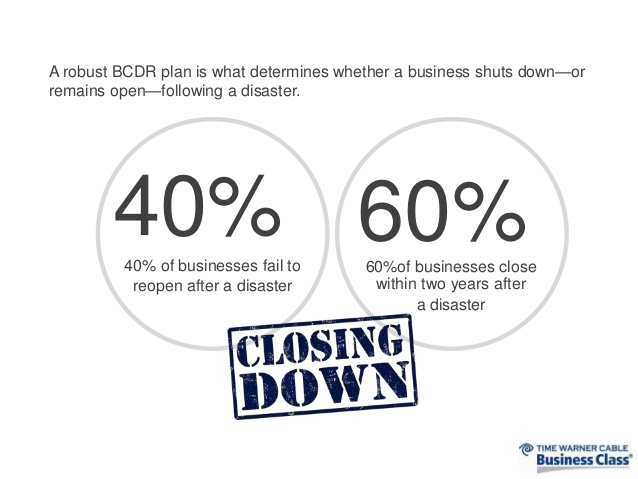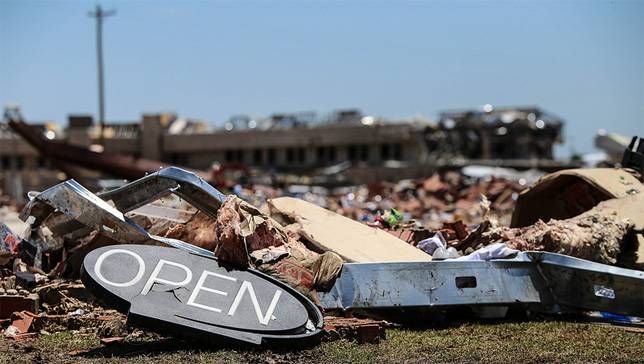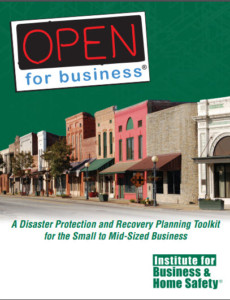The devastating losses (human life and property damage) as a result of hurricanes Harvey and Irma in recent weeks is the focus of Septembers There’s Money Out There broadcast. Although we empathize with the victims of these catastrophic natural disasters, all too often we forget the same can happen to us and have a monumental impact on our businesses, the people we employ and our own families. The discussion will focus on actionable steps that you, as a business owner, can take to prepare in advance for a disaster; natural or man made.

Business Continuity Planning in the Face of Natural Disasters
Only 25% of businesses that close due to a major disaster ever reopen, according to the Institute for Business & Home Safety.

Natural disasters often strike with little to no warning, but their operational and economic impact to organizations can be devastating. As scientists expect the future will likely include more cases of extreme weather, organizations should leverage the calm before the storm to ensure that business continuity plans address key impacts of a natural disaster event. Well-considered planning can reduce the risks any business might face and the losses it might suffer should a disaster strike.
75% of small businesses do not have a disaster recovery plan in place, according to a 2015 survey of 500 small business owners conducted by Nationwide. And, Only 18% of companies surveyed that have fewer than 50 employees have a disaster recovery plan, according to the same survey.
Below is a comprehensive Business Continuity and Disaster Recovery Checklist that will aid you in creating your own plan in the event that a catastrophic natural disaster should occur in your location.
WPFSI.... More Than Just A Lender!
Business Continuity and Disaster Recovery Checklist
Take steps now to prevent and plan for a disaster
- Assign an employee with sufficient seniority and skill to “own” business continuity and disaster preparation and recovery
- Conduct a risk analysis, to identify the most likely risks and the impact of each on critical operations
- Conduct a security analysis, to determine the company’s resiliency for each risk as to critical operations
- Build and implement a business continuity/disaster recovery plan, and update and train employees on it periodically
- Appoint and train a business continuity team to lead response efforts
- Select external business continuity/disaster response partners, including information technology consultants and attorneys, and inform them of their role
- Discuss disaster preparation with key suppliers and customers Assess network security
- Assess data backup and recovery systems
- Assess alternate communications methods for email or phone outages and compromises
- Assess cash management needs during a disaster, including with the company’s bank
- Assess insurance coverage, particularly for business interruption
- Identify alternative operational locations
- Maintain contact lists of key customers and vendors, and copies of key agreements with each
- Maintain an inventory of all equipment
- Identify options for accommodation (hotels, etc.) and provisions (food & drink, etc.) during disaster operations
During a disaster, implement the plan
- Notify and assemble the business continuity team Implement the business continuity/disaster recovery plan
- Make appropriate warning, evacuation, or other initial communication to employees
- Commence physical mitigation, focusing on employee and public safety
- Commence technical mitigation, focusing on critical systems
- Implement alternate communications methods
- Activate redundant or alternate information systems (“failover”)
- Notify external partners for assistance with containment and remediation (including counsel for attorney-client privilege considerations)
- Communicate regularly with employees, suppliers, customers, and vendors
- Notify insurance brokers and carriers
- Notify law enforcement as appropriate
- Preserve records of the disaster and mitigation efforts
After a disaster, improve the plan
- Continue communication efforts, both internal and external
- Document damages to systems, physical plant, and revenue
- Bring the day-to-day information systems back online, integrating with your disaster recovery systems (“failback”)
- Consider any regulatory reporting obligations
- Assess liabilities and remedies under contracts with suppliers, customers, and vendors
- Assess insurance coverage
- Evaluate effectiveness of prevention, mitigation, and backup tools
- Hold a “lessons learned” meeting of disaster recovery team
- Revise business continuity/disaster recovery plan as appropriate
Tune in to 900 AM WURD for There’s Money Out There on, Saturday, September 16 at 1:00 PM for our discussion on Managing Business Disruption.
- Business Interruption Insurance
- Flood insurance – what to know?
- Necessity of business income and how it can help you
- Mike’s lessons learned – replacement cost, not cost of business.
- Types of Disruption –
- Grid goes down
- Losing a business partner
- Natural disaster
- Preparing for business disruption
- What should be in your plan?













[…] Previous […]